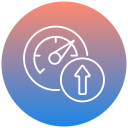Enhancing Team Collaboration with Online Tools
Powering Communication Across Distances
Real-Time Messaging Platforms
Instant messaging platforms such as Slack and Microsoft Teams revolutionize how teams connect, providing channels for quick, topic-focused conversations. These tools allow teams to break away from cumbersome email threads and access immediate feedback, reducing bottlenecks and misunderstandings. By offering integrations with other workflow applications, messaging platforms create a centralized hub where information, files, and updates converge, making collaboration more dynamic and accessible to all members.
Video Conferencing Solutions
Virtual face-to-face meetings have become essential for fostering human connections within remote teams. Video conferencing tools like Zoom and Google Meet enable live interactions, screen sharing, and real-time brainstorming sessions, making it easier to discuss complex topics and ensure everyone remains engaged. These platforms are essential not just for regular check-ins, but also for building trustful relationships, encouraging open dialogues, and nurturing a strong team culture despite physical distances.
Persistent Collaboration Spaces
Beyond real-time messaging, collaboration spaces provide asynchronous options for team engagement. Tools such as shared digital workspaces and forums enable discussions that remain accessible over time, allowing all team members to contribute when it suits their schedules. This persistent environment supports the sharing of resources, capturing of key decisions, and documentation of discussions, which is vital for teams spread across different continents or time zones.
Streamlining Project Management
Task Assignment and Tracking
Tools like Asana and Trello offer visual project boards where teams can assign tasks, set deadlines, and monitor progress in real time. This transparency paves the way for accountability, as each member’s responsibilities are clearly outlined and accessible to all. Team leaders can swiftly identify bottlenecks, redistribute workloads, and keep everyone informed about ongoing priorities, making it far easier to achieve project milestones smoothly.
Milestone and Goal Setting
Online project management platforms support the establishment of key milestones and goals, helping teams stay focused on the bigger picture while handling day-to-day activities. By defining measurable objectives and linking them to specific tasks, these tools create a roadmap that guides the team toward successful project completion. Visual timelines and automated reminders keep everyone on track, reducing the risk of missed deadlines or overlooked deliverables.
Document Sharing and Version Control
Collaboration often involves working on shared documents, files, and spreadsheets. Cloud-based tools such as Google Drive or Microsoft OneDrive enable seamless sharing and editing among team members. With version control features, changes are tracked, and previous iterations can be restored if needed. This not only minimizes the risk of lost work but also ensures that everyone has access to the latest information, fostering greater efficiency and reducing miscommunication.
Fostering Knowledge Sharing and Innovation
Centralized Knowledge Bases
Digital knowledge bases provide a singular, searchable repository for guidelines, best practices, and frequently asked questions. Platforms like Notion and Confluence make it easy to document organizational knowledge and keep it up to date. Teams can quickly locate relevant information, reducing redundancy and saving time that would otherwise be spent repeating answers or hunting for resources scattered across various locations.
Collaborative Whiteboarding Tools
Online whiteboarding applications allow multiple users to brainstorm, diagram, and map out ideas together in real time, regardless of their locations. These virtual spaces mimic the creativity of in-person workshops, enabling teams to visualize concepts, group related topics, and build on each other’s suggestions dynamically. The collaborative nature of these tools ensures that every voice is heard and increases the likelihood that innovative solutions will emerge.
Integrated Feedback Mechanisms
Incorporating structured feedback loops into collaborative workflows ensures continuous improvement and learning. Many tools provide features for commenting, annotating, or reviewing others’ contributions directly within documents or projects. This immediate, context-rich feedback speeds up revisions, enhances the quality of deliverables, and fosters a culture where constructive criticism is welcomed and used as a springboard for professional growth.
